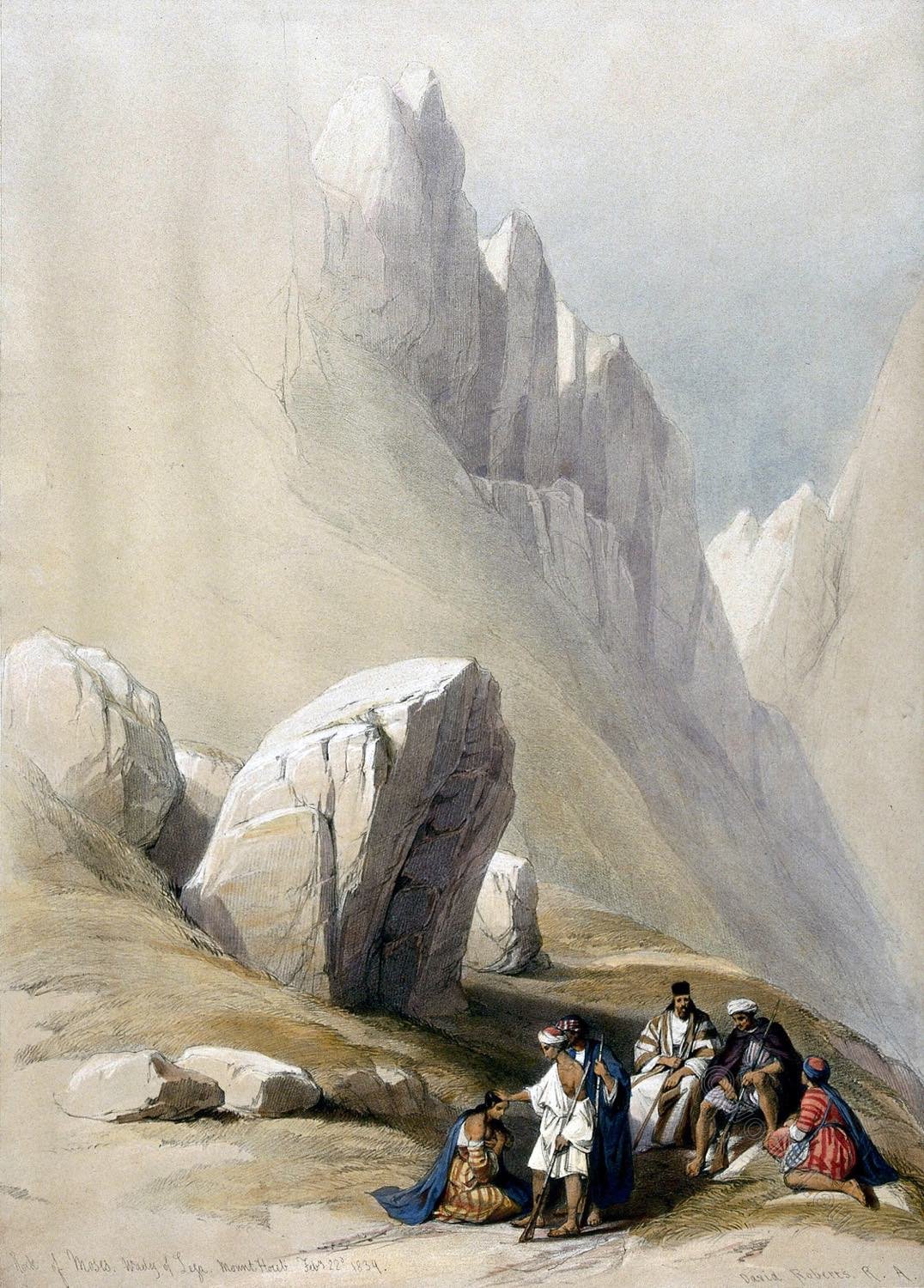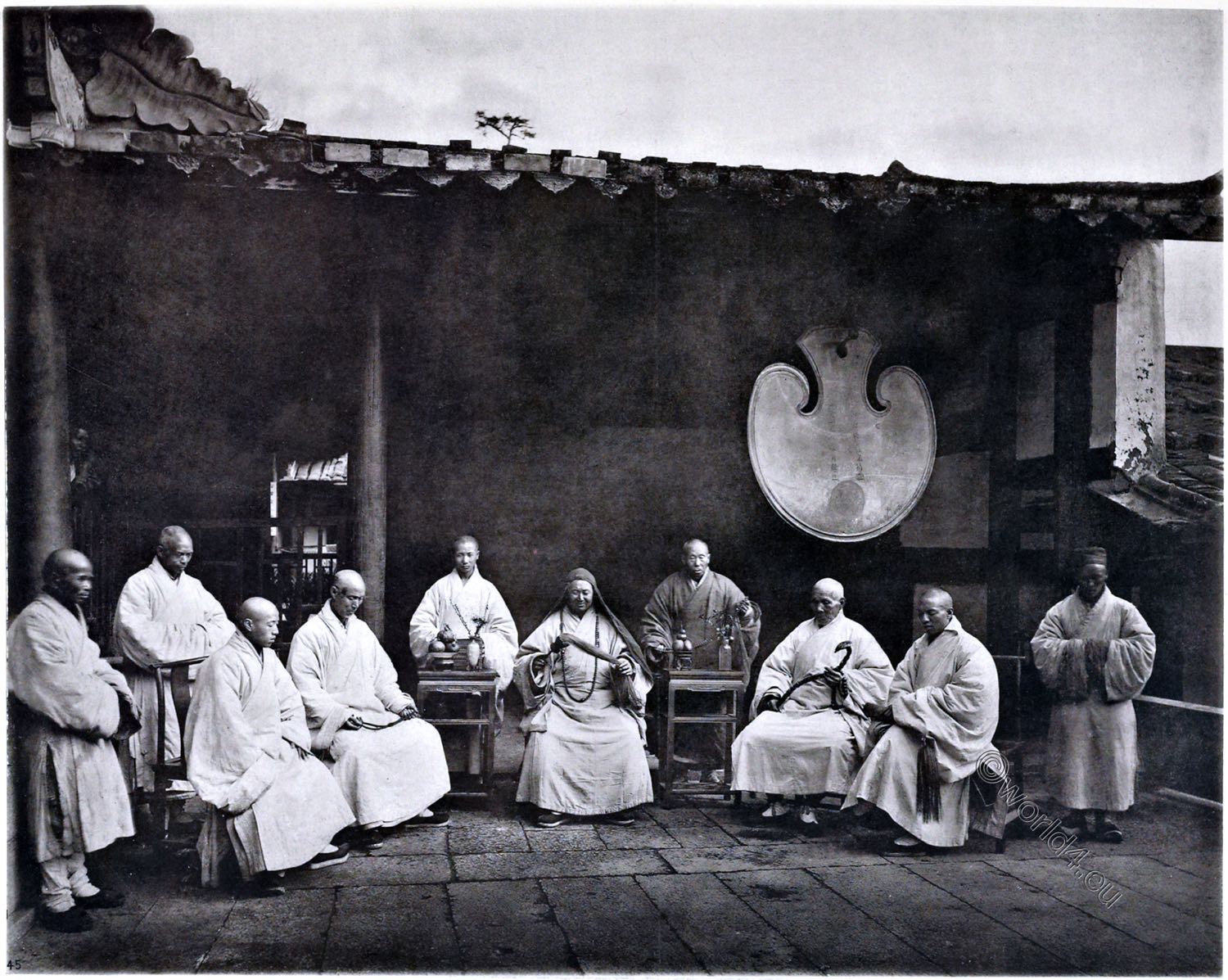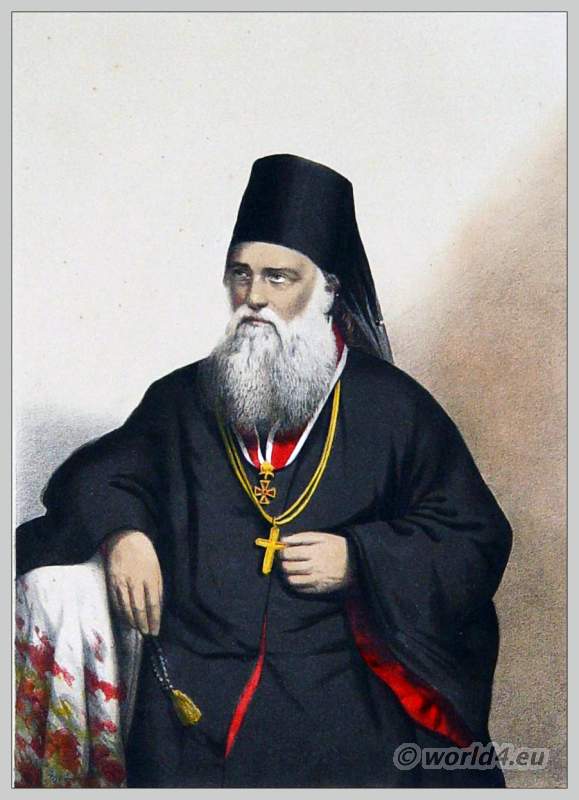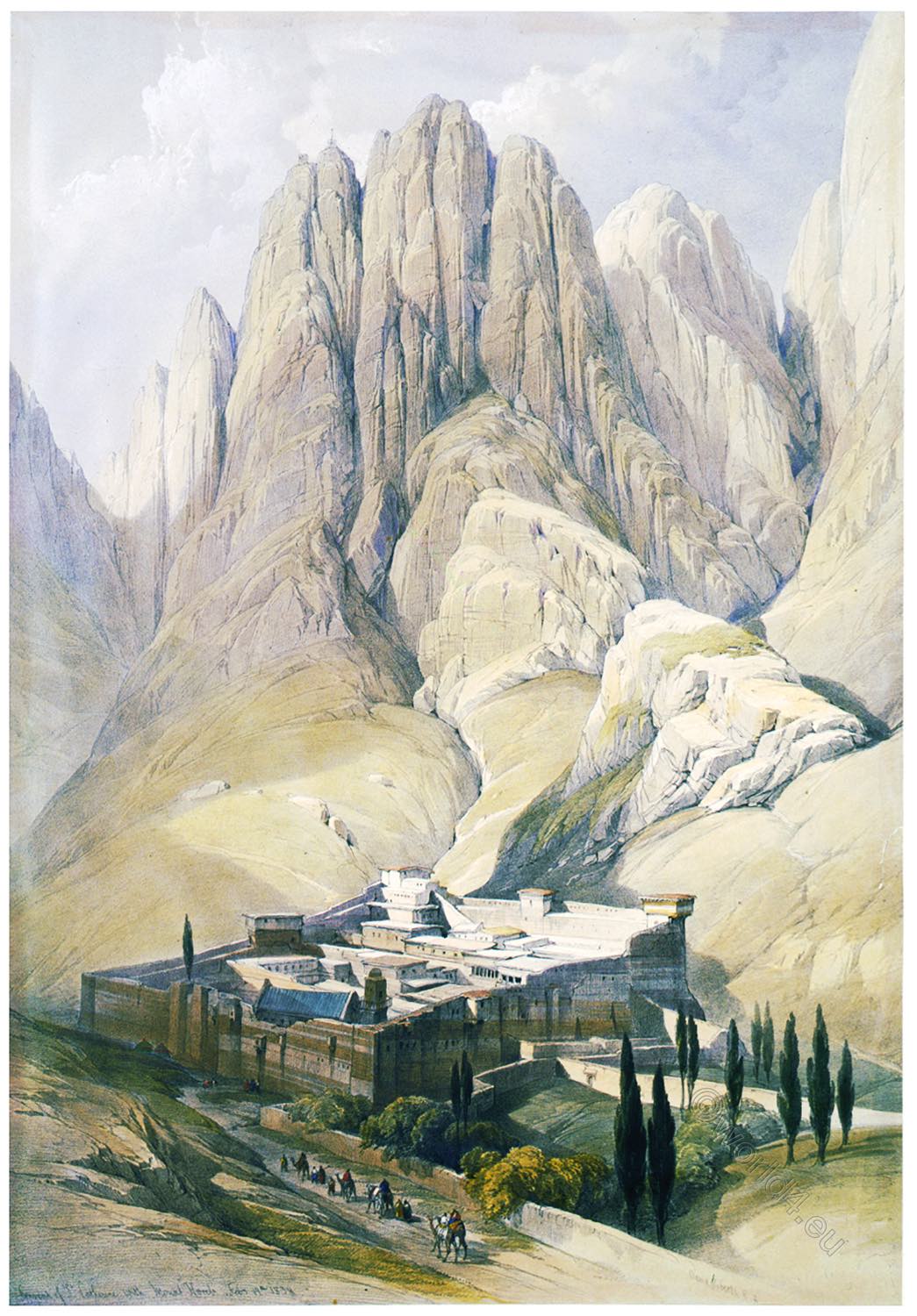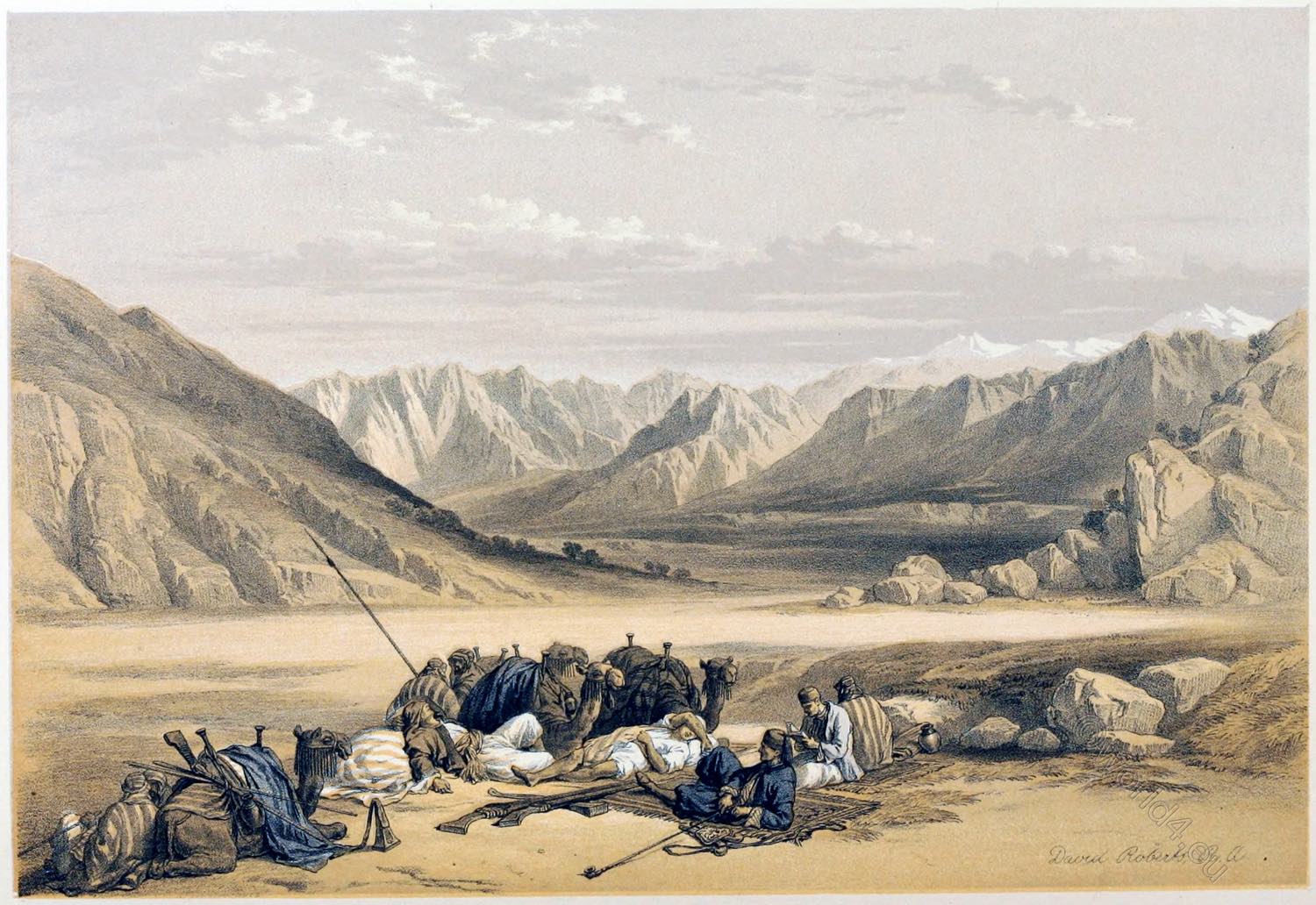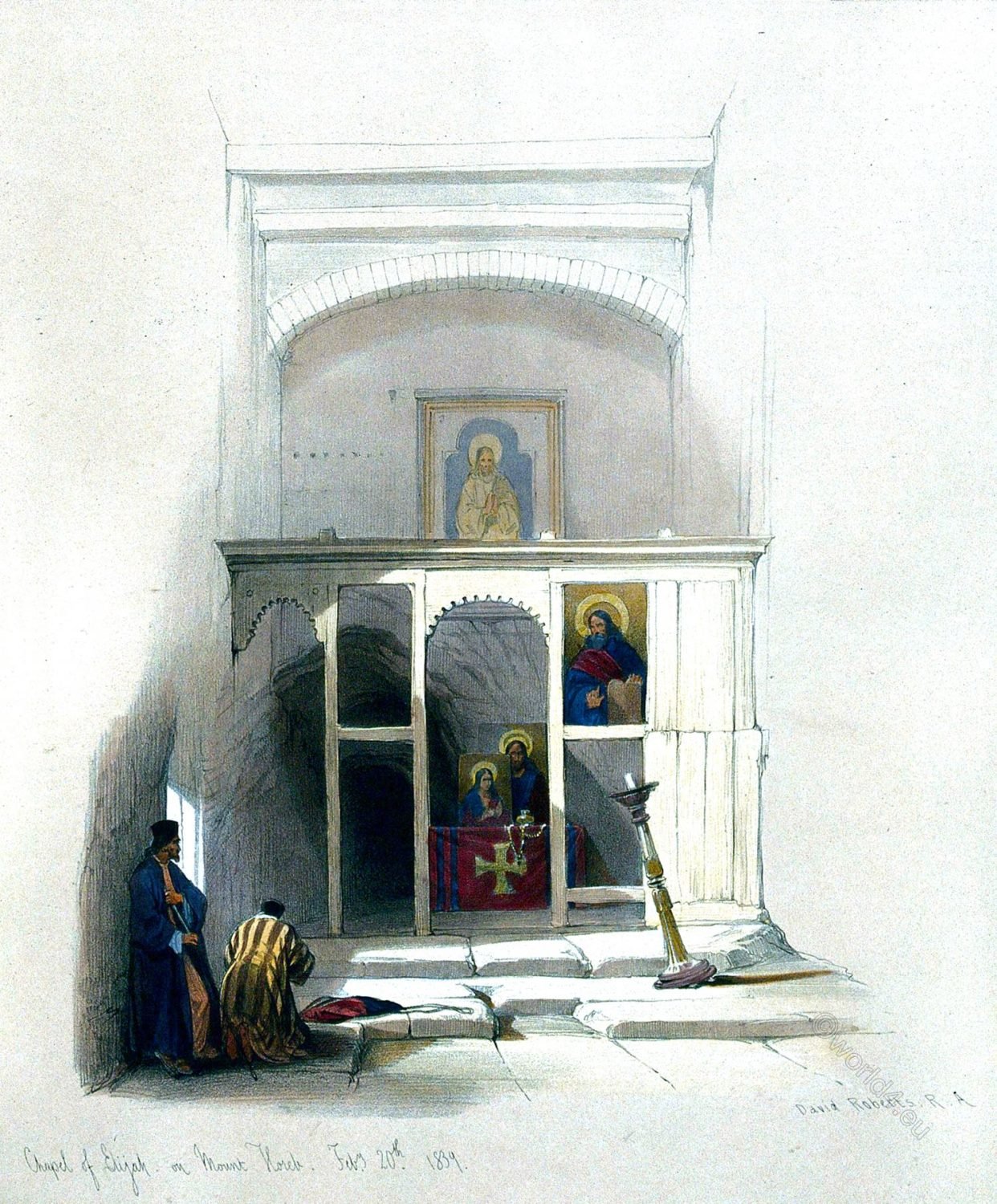
CHAPEL OF ELIJAH, MOUNT SINAI
by David Roberts, February 20th, 1839.
After passing the second portal in the ascent by the steps or stairs in the ravine, the traveller reaches a little plain or basin, on the ridge which divides the valley of the Convent from that of El-Leja, and here he first perceives the loftier peaks of the range; that of Jebel Musa on the left, and that of St. Catherine on the south-west beyond the valley of El-Leja.
In this plain is a cypress-tree, near a deep well; and on a rock near it are several Arabic inscriptions, records of pilgrimage. 1) Not far from the well, and where the ascent commences, is a rude, low building, which contains the “Chapel of Elijah.”
It is raised on the spot to which he is presumed, by tradition, to have retired, when he fled into the wilderness from Jezebel, the wife of Ahab, in the general oppression of the Church of Israel.
Within the Chapel, and on one side of the altar, is seen (on the left of the Sketch) a small cave, in which the Prophet is said to have remained. “And he came thither into a cave, and lodged there; and, behold, the word of the Lord came to him, and said, What doest thou here, Elijah ?” 2).
This little Greek Chapel is interesting, though in a state of ruin, placed as it is in front of a spot thus venerated. Pictures of saints, with lighted tapers, and other decorations of the Eastern Church, are, even in this wild place, displayed.
The Greek Church draws a broad distinction between statues and pictures in its places of worship. The former it anathematizes, while the latter it consecrates, assigning as the reason, the language of the Apostle (1 Cor.viii.-4); and pronouncing the image to be “a work of man’s invention, while the picture is an adumbration of some true event, or actual existence;” their chief dependence for this opinion being the authority of the fourth General Council.
The use of tapers and torches in the service in daylight is regarded by them as a memorial of the primitive and persecuted Church, when the Christians met before daylight for security, or in subterranean cells for concealment.
1) Biblical Researches, i. 152. 2) 1 Kings, six. 9.
Source: The Holy Land, Syria, Idumea, Arabia, Egypt, & Nubia, by David Roberts (British, 1796-1864), George Croly, William Brockedon. London: Lithographed, printed and published by Day & Son, lithographers to the Queen. Cate Street, Lincoln’s Inn Fields, 1855.
Continuing
Discover more from World4 Costume Culture History
Subscribe to get the latest posts sent to your email.

